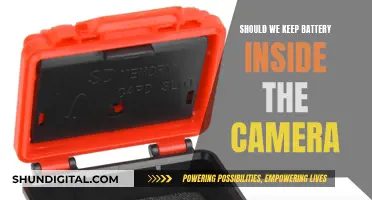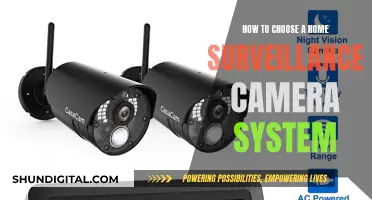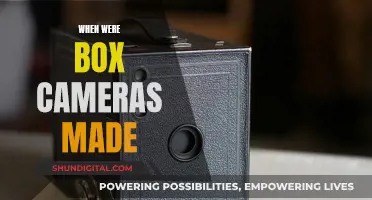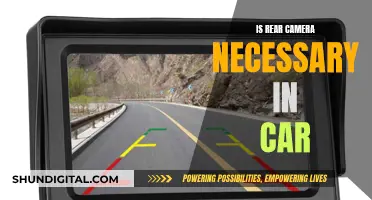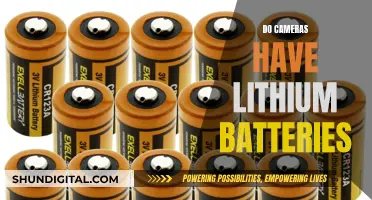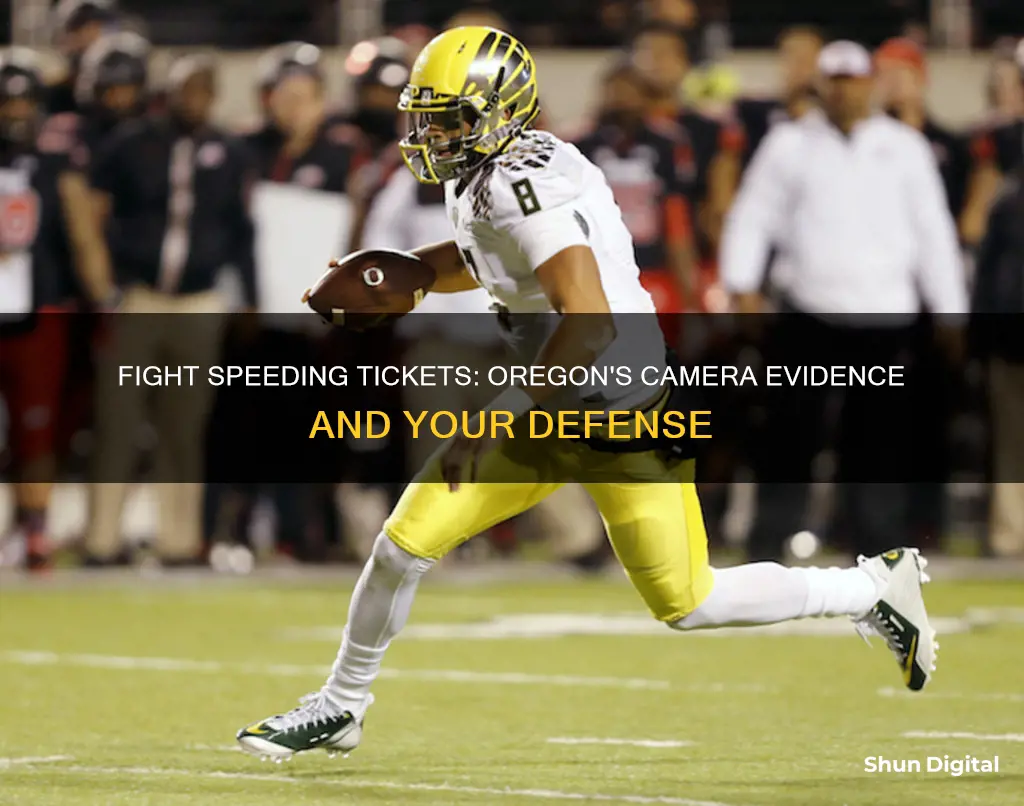
If you want to beat a speeding ticket in Oregon, you can try the following:
- Plead not guilty and request a trial.
- Argue that the photo is not clear enough to confirm that the car is yours.
- Argue that the photo does not show you driving.
- Argue that the traffic light was not functioning properly.
- Argue that the speed detection system was not functioning properly.
- Argue that you were driving to the hospital in a rush.
- Argue that the camera ticket is hearsay.
What You'll Learn

Plead not guilty and request a trial
If you want to dispute a speeding ticket in Oregon, you can plead not guilty and request a trial. Here's how:
- Check the date, time, and location of the ticket. Make sure you were driving the car when the ticket was issued.
- Make note of the code section you're cited for violating. Read the law and understand both its elements and the penalties for violation.
- Review the photos. If the notification included photos, confirm that it's your car in the photo, and that the photo is clear.
- Plead not guilty by mail or online, if possible. Some jurisdictions allow you to respond to the citation without going to a live arraignment in traffic court.
- Appear at arraignment. If you have no choice but to appear in traffic court, show up at the date and time listed on your citation.
- Request a formal hearing. When you plead not guilty, demand a full formal hearing or trial.
- Request production of documents. Call the local police department or other law enforcement agency in charge of the camera used to issue your citation. Request copies of the photos if they were not included with your citation. Also, request full maintenance records for the camera and the traffic light or speed monitoring system to establish that they were regularly monitored and maintained.
- Research the applicable law. Look for cases in your city or county about traffic cameras, and see if any appellate court decisions have ruled on the legality of traffic camera tickets.
Remember, it is the prosecution's burden to prove each element of your violation. You don't have to prove that you didn't do it.
Unleash Camera Raw's Power: Discovering MIROE
You may want to see also

Argue that the photo is inadmissible as hearsay
Hearsay is a statement by someone to a witness who, while testifying in court, repeats the statement. The statement is hearsay only if it is offered for the truth of its contents. In general, courts exclude hearsay evidence in trials, criminal or otherwise. The hearsay ban aims to prevent juries from considering secondhand information that hasn't been subject to cross-examination.
In the context of a speeding ticket, the photo taken by the camera can be considered a "statement" and the camera can be considered a "witness". However, for the photo to be considered hearsay, it must be offered as evidence to prove the truth of its contents, i.e., that you were speeding. If the photo is being used to prove something other than the fact that you were speeding, it would not be considered hearsay. For example, the photo could be used to prove that you were driving the car, without proving that you were speeding.
To argue that the photo is inadmissible as hearsay, you would need to demonstrate that it is being used to prove the truth of its contents, i.e., that you were speeding. You could also argue that the photo is not reliable evidence because it does not accurately capture your speed or because it has been tampered with. Additionally, you could argue that the photo radar was not properly calibrated or placed in accordance with the law.
It is important to note that there may be exceptions to the hearsay rule that could allow the photo to be admitted as evidence even if it is considered hearsay. For example, if the photo is a business or official record, it may be admissible as an exception to the hearsay rule.
Understanding Camera Raw: Unlocking Photography's Full Potential
You may want to see also

Argue that the photo lacks foundation
To argue that the photo lacks foundation, you must assert your right to confront witnesses. The Sixth Amendment of the Constitution guarantees you the right to cross-examine witnesses. Unless a witness appears who maintains the record and system associated with the camera, you do not have this opportunity.
Dispute the authenticity of the photograph. If no one from the company that maintains the camera shows up to testify, object to the use of the photographs for lack of foundation. Likewise, if you have a camera ticket for speeding, the company or officer who maintained the camera and the speed detection equipment must appear in court to testify or the photo has no foundation to be admitted into evidence.
For the prosecution to rely on the photos, it must present evidence that the camera that took the photo, the system that connected it to the traffic light, and the traffic light itself were functioning properly. Without establishing this foundation that all of these machines are reliable, the photo is not reliable and cannot be admitted into evidence.
Updating Adobe Camera Raw: A Simple Guide
You may want to see also

Argue that the prosecution cannot prove you were driving
If you were not the driver at the time of the citation, you can submit a Certificate of Innocence (COI) to the Multnomah County Circuit Court. This must be done within 40 days of the incident date on the citation. Along with the COI, you must also submit a legible photocopy of the front and back of your driver's license. If you were not the driver, the citation against you will be dismissed.
Forester Rear Camera Diagnostics: How to Access?
You may want to see also

Argue that the prosecution cannot prove the traffic light was functioning properly
If you are issued a speeding ticket in Oregon, you have several options to resolve it. If you were not the driver at the time of the incident, you can submit a Certificate of Innocence (COI) and a legible photocopy of the front and back of your driver's license to the Multnomah County Circuit Court. This must be done within 40 days of the incident date on the citation.
If you were the driver, you can:
- Pay a fee to take a traffic safety class and have your citation dismissed.
- Pay your citation online.
- Enter a plea of no contest and send a letter of explanation.
- Enter a plea of not guilty and request a trial.
- Request a trial with written statements only.
If you choose to go to trial, you can argue that the prosecution cannot prove the traffic light was functioning properly. You can ask whether the camera was working correctly at the time it generated your ticket. Cameras are machines and they can malfunction. If the prosecution cannot prove that the camera was working properly, they do not have a solid case proving that you were speeding. You can also argue that the photograph is hearsay and is therefore inadmissible under the Sixth Amendment.
Exploring Adobe Camera Raw: Mastering the Undo Functionality
You may want to see also
Frequently asked questions
You should receive a packet of information that explains your options. If you did not receive a packet, you can call the Photo Enforcement Violation Hotline at 503-221-0415 or 1-800-799-7082.
If you are the registered owner of the car, and someone else was driving your car, you are required to complete the Certificate of Innocence and mail it along with a legible photocopy of the front and back of your driver’s license in the envelope provided.
Oregon Law authorizes the citation issued to your business or public agency to be dismissed if you complete the Affidavit of Non-Liability identifying the driver.
After reading through your citation packet, if you still have questions, you may direct your Photo Radar or Red Light questions to a Portland Police Bureau representative by calling 503-823-2209.


